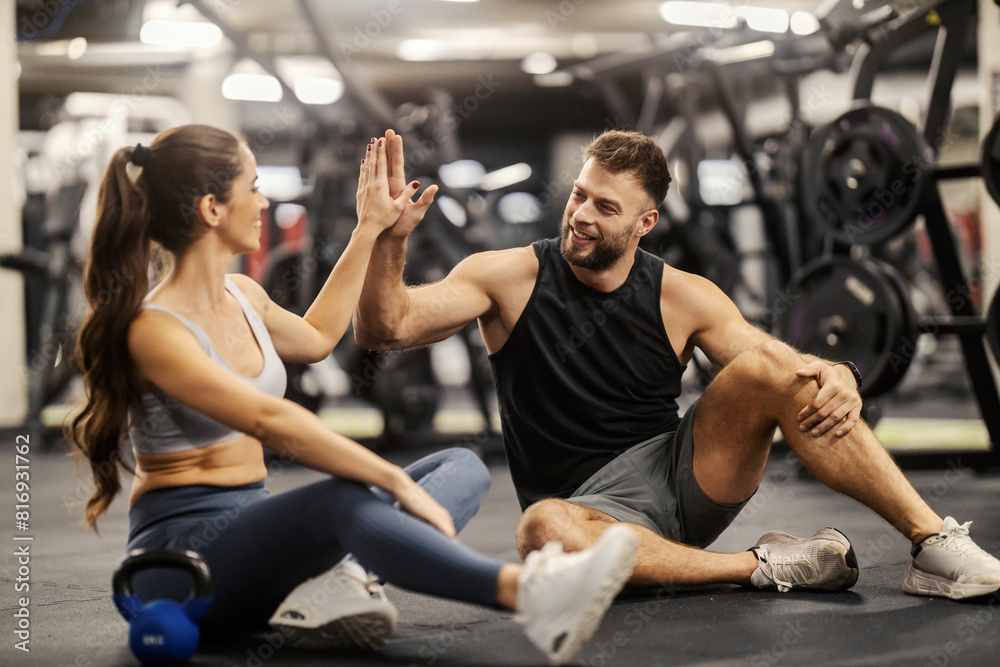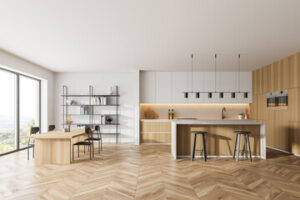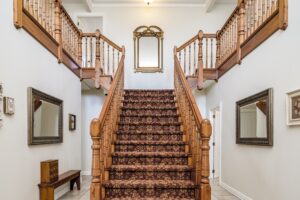Creating a functional and motivating gym environment requires careful consideration of every detail, including the gym flooring. The right flooring not only enhances the aesthetic appeal of your space but also plays a crucial role in safety, durability, and performance. In this guide, we’ll explore the various types of gym flooring, their benefits, installation methods, and maintenance tips, ensuring you make an informed decision for your fitness area.
Why is Gym Flooring Important?
Gym flooring serves several critical functions that contribute to the overall workout experience:
- Safety: High-quality flooring reduces the risk of slips, falls, and injuries, providing a secure environment for various exercises.
- Shock Absorption: Proper flooring helps absorb impact, protecting joints during high-impact activities.
- Durability: Fitness environments can be tough on floors, so choosing durable materials ensures longevity.
- Aesthetic Appeal: The right flooring can enhance the overall look and feel of your gym, making it more inviting.
Table: Benefits of Quality Gym Flooring
| Benefit | Description |
| Safety | Minimizes risk of injuries and accidents |
| Shock Absorption | Protects joints during intense workouts |
| Durability | Stands up to heavy equipment and foot traffic |
| Aesthetic Appeal | Enhances the overall look of the gym space |
Types of Gym Flooring
Choosing the right type of gym flooring depends on various factors, including the types of activities performed and the overall design of the space. Here are some popular options:
1. Rubber Flooring
Rubber flooring is a common choice for gyms due to its durability and shock-absorbing properties. It comes in rolls or tiles and is available in various thicknesses.
- Pros: Excellent shock absorption, slip-resistant, easy to clean, available in various colors.
- Cons: Can be heavy and may have an odor initially; higher initial cost.
2. Foam Flooring
Foam flooring is lightweight and soft, making it ideal for areas focused on stretching, yoga, or children’s play. It typically comes in interlocking tiles.
- Pros: Comfortable, easy to install, good for low-impact activities.
- Cons: Less durable than rubber; not suitable for heavy equipment.
3. Vinyl Flooring
Vinyl flooring offers versatility and a wide range of designs. It can mimic the look of wood or stone while providing a durable and water-resistant surface.
- Pros: Easy to maintain, moisture-resistant, available in various styles.
- Cons: May not provide as much shock absorption as rubber or foam.
4. Carpet Tiles
Carpet tiles can add warmth and comfort to your gym, making them suitable for multi-purpose spaces. They are easy to replace if damaged.
- Pros: Comfortable, helps absorb sound, easy to install and replace.
- Cons: Not ideal for heavy equipment; can trap dust and allergens.
5. Artificial Turf
Artificial turf is an innovative option for functional training areas, particularly for sports performance training. It provides a unique surface for various activities.
- Pros: Ideal for agility drills and sled work, durable, easy to clean.
- Cons: Higher cost; may require a specific installation process.
Table: Comparison of Gym Flooring Types
| Type | Material | Shock Absorption | Durability | Ideal Use |
| Rubber Flooring | Synthetic rubber | High | Very High | Weightlifting, cardio, general fitness |
| Foam Flooring | EVA foam | Moderate | Low | Yoga, stretching, children’s play |
| Vinyl Flooring | PVC or vinyl composite | Moderate | Moderate | Multi-purpose, aerobics |
| Carpet Tiles | Fiber or nylon | Low | Moderate | Multi-purpose, offices |
| Artificial Turf | Synthetic grass | Moderate | High | Agility drills, sports training |
Installation Methods
The installation method for gym flooring can vary based on the type of material chosen. Here are common methods for each type:
1. Glue-Down Installation
This method is often used for rubber and vinyl flooring, where adhesive is applied to the subfloor before laying down the flooring material.
- Pros: Provides a strong bond, suitable for high-traffic areas.
- Cons: Requires careful application of adhesive; more time-consuming.
2. Interlocking Installation
Foam flooring and carpet tiles often utilize interlocking designs, where tiles snap together without the need for adhesives.
- Pros: Quick and easy to install; no mess from glue.
- Cons: May shift if not properly installed.
3. Loose Lay Installation
Some vinyl flooring options allow for loose lay installation, where the flooring is simply laid on the subfloor without adhesives. This method works best for lightweight materials.
- Pros: Fast installation, easy to remove and replace.
- Cons: May not be as stable as glued options.
Bulleted List: Installation Tips
- Prepare the subfloor by ensuring it is clean, dry, and level.
- Allow flooring materials to acclimate to room temperature before installation.
- Follow the manufacturer’s guidelines for adhesive and installation techniques.
- Use a utility knife for precise cutting of tiles and sheets.
Maintenance of Gym Flooring
Maintaining gym flooring is crucial to ensure its longevity and safety. Here are some essential maintenance tips:
Regular Cleaning
- Sweeping or Vacuuming: Remove dirt and debris regularly to prevent buildup.
- Mopping: Use a suitable cleaner and damp mop for vinyl, rubber, and other surfaces.
Preventative Measures
- Use Mats: Place mats at entrances to reduce dirt and moisture.
- Inspect for Damage: Regularly check for any signs of wear or damage, addressing issues promptly.
Annual Maintenance
- Deep Cleaning: Consider a professional deep cleaning annually to maintain appearance and hygiene.
- Refurbishing: For rubber flooring, consider resurfacing every few years to restore its texture.
Maintenance Checklist
| Task | Frequency |
| Sweep or Vacuum | Weekly |
| Damp Mop | Monthly |
| Deep Clean | Annually |
| Inspect for Damage | Monthly |
Final Words!
Choosing the right gym flooring is essential for creating a safe, functional, and attractive workout environment. With various types of flooring available, from durable rubber to comfortable foam, there is a perfect solution for every gym design and activity.
By understanding the benefits, installation methods, and maintenance tips, you can ensure that your gym flooring remains in excellent condition while enhancing the overall workout experience. Invest in quality gym flooring to support your fitness goals and create a motivating space for yourself and others.




